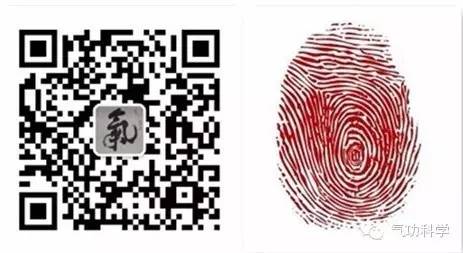The term “Qigong” is a modern concept, and its meaning varies among practitioners of medicine, Confucianism, Buddhism, and Daoism. Medical practitioners refer to it as “Shengsheng” (nurturing life), “Daoyin” (guiding and stretching), and “Xingqi” (circulating qi); Daoists refer to it as “Tuna” (breath regulation), “Neidan” (internal alchemy), “Xuangu” (mysterious skills), “Zhoutian” (circulating the heavens), and “Xiuzhen” (cultivating truth); Buddhists refer to it as “Chanding” (meditative concentration), “Can Chan” (investigating Chan), and “Zhiguan” (stopping and observing); Confucians refer to it as “Xiushen” (cultivating oneself), “Zhengxin” (rectifying the heart), and “Zuo Wang” (sitting and forgetting).
1. The Origin of the Term Qigong
According to historical documents, the term “Qigong” first appeared in the book “Jingming Zongjiao Lu” written by the Daoist Xu Xun during the Jin Dynasty, where it is mentioned as “Qigong Chanwei” (the subtle explanation of Qigong). The book “Lingjianzi” refers to the cultivation of qi through the practice of circulating qi and performing good deeds, resulting in internal changes, which is termed “Daoqi Gongcheng” (the achievement of Dao through qi cultivation). This indicates that the initial meaning of the term had a Daoist cultivation technique connotation, which was not widely adopted in ancient and modern times. After a millennium, during the late Qing Dynasty, the term Qigong began to appear in some cultivation texts. This situation likely arose from the multitude of ancient cultivation schools, each with its unique principles and methods, using their own terminology. For example, the Buddhist term “Chanding,” the Confucian term “Zuo Wang,” the medical term “Daoyin,” and the martial arts term “Neigong” all refer to internal cultivation but are expressed differently. Even within Daoism, there are many schools of cultivation, each with different terminologies, such as Neidan (internal alchemy), Zhoutian Gong (circulating the heavens), and Taixi (fetal breathing).
The term “Qigong” was mentioned in the 1915 publication “Shaolin Secret” by the Zhonghua Book Company and in the 1929 publication “Martial Arts Compilation” by the Commercial Press, referring to a method of practicing internal power in martial arts. In 1929, Zhang Qinglin compiled “Secrets of Practicing Qigong,” and in 1934, Dong Hao published “Special Treatment for Pulmonary Tuberculosis: Qigong Therapy” at the Xianglin Hospital in Hangzhou, followed by the 1938 publication of “Qigong Treatment Records” by the Gongpu Qigong Treatment Institute in Shanghai. From then on, the term “Qigong” began to be associated with medical care and health.

The widespread use of the term Qigong began in the 1950s. In 1955, the Qigong Rehabilitation Institute was established in Tangshan, Hebei Province, marking the beginning of the systematic application of Qigong therapy in disease recovery and treatment. After the Ministry of Health awarded Qigong therapy in December 1955, the term “Qigong” began to be widely used in the academic fields of traditional Chinese medicine and health preservation.
In the late 1970s, with the rise of the “Qigong craze,” various schools of health and wellness practices began to spread under the name of Qigong, such as Daoist Qigong, Buddhist Qigong, Hard Qigong, and Martial Arts Qigong.
With the large-scale popularization of mass Qigong exercise activities, the term Qigong became widely known. Moreover, after the reform and opening up in the 1980s, Qigong began to go beyond borders and spread worldwide. Today, Qigong has reached many countries across continents, and the term has become a specific term, transliterated into various languages such as English, French, and German, widely recognized and accepted. Some dictionaries have officially included the term “Qigong,” such as the “Dictionary of Traditional Chinese Medicine” (1984, People’s Health Publishing House), “Dictionary of Rehabilitation Medicine” (edited by Zhu Dahong, 1990, People’s Health Publishing House), and “Dictionary of Religion” (edited by Ren Jiyu, 1981, Shanghai Dictionary Publishing House), and specialized dictionaries like “Chinese Qigong Dictionary” (edited by Lü Guangrong, 1988, People’s Health Publishing House) and “Encyclopedia of Chinese Medicine: Qigong” (edited by Lin Yagu, 1988, Shanghai Scientific and Technical Publishing House). To this day, the term Qigong is commonly used as a collective term for ancient Chinese life cultivation techniques.

2. The Connotation of the Concept of Qigong
As mentioned above, Qigong is a collective term for ancient Chinese life cultivation techniques, encompassing a wide range of practices. Due to the specific concepts or connotations of the cultivation techniques of various schools throughout history, the basic concept of Qigong remains subject to various interpretations. The more common viewpoint today is that: Qigong is a self-cultivation method that uses techniques such as body adjustment, mind regulation, and breath control to cultivate essence, qi, and spirit for health and wellness. Professor Liu Tianjun further defines Qigong as a skill that integrates body adjustment, breath control, and mind regulation into a holistic practice. Mind regulation involves controlling psychological activities, breath control involves regulating breathing movements, and body adjustment involves controlling posture and movements. By combining mind regulation, breath control, and body adjustment, one achieves coordination of body and mind, fully mobilizing the body’s internal self-regulation functions to promote health and wellness.
Some scholars believe that Qigong is based on a holistic view of life, through active introspective awareness activities (with mind regulation, body adjustment, and breath control as its extensions), transforming, perfecting, and enhancing the body’s life functions, turning natural instincts into conscious intelligent practices. This definition indicates that the theoretical foundation of Qigong is a holistic view of life, clarifying that the special training methods and content of Qigong involve specific introspective awareness activities, depicting the purpose of Qigong practice as achieving transformation, perfection, and enhancement of one’s life functions, improving physical fitness, enhancing intelligence, cultivating noble character, and developing potential, allowing individuals to break free from instinctual constraints and enter the realm of conscious intelligence.
This article posits that the essence of Qigong practice lies in the training and regulation of the body, qi, and spirit, achieving a unity of the three. This argument will be elaborated upon in this article.
(Source: Zhang Wenchun, Doctoral Dissertation at Nanjing University of Traditional Chinese Medicine, “Theoretical Research on Qigong Practice Based on the Unity of Body, Qi, and Spirit”)
Source: Qigong Science Research Institute, Jiangxi University of Traditional Chinese Medicine
For more exciting content, please follow Qigong Science


